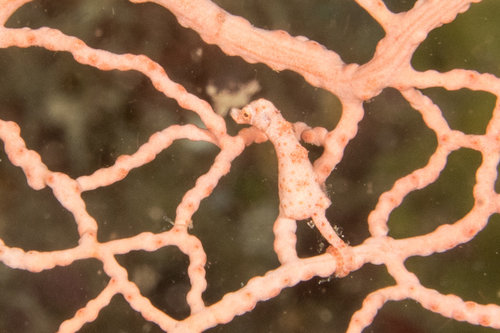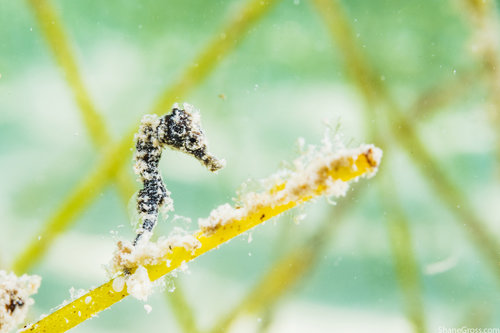Denise’s pygmy seahorse:- a champion hide-and-seeker

March's featured iSeahorse observation highlights a champion hide-and-seeker, Denise’s pygmy seahorse (Hippocampus denise), courtesy of iSeahorse user maractwin. With their petite size and puppy dog eyes, they seem more like seadogs than seahorses. That adorable face kind of blows its cover, but imagine how seamlessly this fish would blend in with its back turned! In fact, the photographer nearly missed out on snapping the shot, as he didn’t even realize it was there until his dive guide pointed it out to him.
This particular specimen was found in the Solomon Islands, but Denise’s pygmy seahorses can also be found in Indonesia, Malaysia, Micronesia, Palau, Philippines, Thailand and Vanuatu. They have a tight-knit relationship with gorgonian corals, though it appears to be a rather one-sided affair. Once a juvenile has chosen their host coral, they settle down for the long haul. The pygmies benefit from camouflage and having a place for their tails to cling, seemingly in exchange for nothing other than cute company.
While currently listed as Data Deficient on the IUCN Redlist, it stands to reason that H. denise could be quite vulnerable to climate change. Due to their dependence on gorgonian corals, Denise’s pygmy seahorses are highly dependent on the health of coral reefs, which can suffer from the ocean acidification that results from rising carbon dioxide levels. Sadly, their clever camouflage won’t help them hide against bleached coral.










